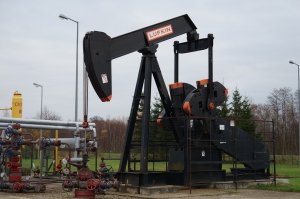Freeing ourselves from reliance on fossil fuels is not only good for the planet and future generations. It also saves lives here and now.
That’s the message from studies of the public health “co-benefits” that come with reduced emissions. In many cases, these alone are large enough to provide a compelling case for replacing fossil fuels with clean energy, even without counting benefits for the climate.
The burning of fossil fuels releases a toxic stew of air pollutants alongside carbon dioxide, the number one culprit in climate change. Foremost among these “co-pollutants” are sulfur dioxide and nitrogen oxides, which are hazardous in themselves and undergo chemical reactions in the air to form suspended particulates that penetrate the lungs and further damage human health. Coal-fired power plants are the main source of sulfur dioxide emissions, which the U.S. Environmental Protection Agency (EPA) has estimated are responsible for about 70% of the health costs from power plants.
Air pollution is a leading cause of death at home and abroad. In the U.S., a 2019 study in the Proceedings of the National Academy of Sciences estimated that outdoor air pollution kills more than 100,000 Americans each year. Globally, the World Health Organization estimates that dirty air kills more than 4 million people annually.
Economically, this is a big deal – even bigger than the climate damages often measured by conventional cost-benefit analysis. And politically, the deaths and ill health caused by air pollution are more immediately visible than climate instability: the costs are borne by people alive today rather than by future generations, and they are borne mainly in the same places where the emissions occur rather than by people worldwide.
The co-pollutant cost of carbon
In a recent study I carried out with colleagues at MIT and the University of Massachusetts Amherst, we analyzed the “co-pollutant cost of carbon” in U.S. electric power generation – the premature deaths from co-pollutants per ton of carbon dioxide emissions. A prior study by MIT researchers estimated that in 2005, power plant emissions were responsible for 53,900 deaths per year nationwide. Using standard EPA measures for the value of a statistical life, we found that in 2011 the average co-pollutant cost of carbon was roughly $45/ton. This can be regarded as a conservative estimate in that it does not include the costs of non-fatal illnesses.
The co-pollutant cost was 20% higher than the “social cost of carbon” estimate of $37/ton that the Obama administration used for climate damages. In other words, including the here-and-now health benefits of cutting fossil fuels – alongside the climate benefits – would have more than doubled the economic rationale for doing so.
These results are even more striking when we compare public health co-benefits to the revised social cost of carbon being used now in the Trump administration. By making two changes to its calculations – bumping up the discount rate so that future damages look smaller in terms of present dollars, and zeroing out the costs of damages outside the U.S. – the EPA whittled its measure of the social cost of carbon to merely $1-$6/ton. By this measure, the co-pollutant cost of carbon vastly exceeds its climate cost. The Trump-era EPA maneuver underscores the difference between the health costs and climate impacts of fossil fuels. Unlike climate damages, the health costs of co-pollutants are not affected by how much or little weight policymakers put on the well-being of future generations and of people in other countries.
Elsewhere, too, the public health costs of fossil fuels provide a compelling reason to shift to clean energy. In Europe, a 2019 study estimated that outdoor air pollution causes 790,000 premature deaths annually. In India and China, countries with some of the worst air quality in the world, the World Health Organization puts the annual death tolls at 620,000 and more than one million, respectively.
Differential benefits from emissions reduction
Apart from strengthening the case for replacing fossil fuels with clean energy, accounting for the health co-benefits changes how we think about where to cut emissions. From the standpoint of climate change, all carbon dioxide molecules are the same, so it doesn’t matter where emissions are reduced. The quantity and impacts of co-pollutant emissions, on the other hand, vary greatly across pollution sources.
From the standpoint of efficiency, it makes sense to cut emissions where they result in the highest number of premature deaths from co-pollutant exposure. From the standpoint of safety and the right to a safe environment – the cornerstone of U.S. air pollution policy – it makes sense to cut emissions where they pose the greatest health risks to individuals (even if some of them live in sparsely populated areas where the total number of deaths is not so high). From the standpoint of environmental justice, it makes sense to cut emissions where they harm vulnerable communities already facing disproportionate pollution burdens. To some extent these three criteria – efficiency, safety, and justice – overlap. Regardless of the relative weight assigned to them in environmental policy, all point to the conclusion that we should put priority on cutting emissions in the locations and sectors where the benefits are greatest.
In our study of the electric power sector, for example, we found that the co-pollutant cost of carbon varies significantly from state to state. In terms of total deaths, the impact per ton of carbon emissions in New Jersey was more than double the national average, reflecting proximity to major population centers, and more than 20 times the impact in Arizona, the state with the lowest number of deaths per ton.
In a multi-sectoral study, Manuel Pastor of the University of Southern California and I found that emissions from petroleum refineries generally have the biggest adverse health impact from air pollution of any major industrial sector in the U.S. Refineries also have the greatest disproportionate impacts on African-Americans, Latinos, and low-income communities.
Internationally, too, we find wide variations in the co-pollutant cost of carbon. The number of premature deaths per ton of carbon emissions is roughly twelve times higher in India than in the U.S. and more than five times higher in China. The people of both countries have a lot to gain from a clean energy transition.
Changing the narrative on fossil fuels
A favorite ploy of the fossil fuel lobby is to claim that we face an inexorable tradeoff between advancing economic well-being and protecting the environment. Environmentalists all too often play into this narrative when they call for belt-tightening by the present generation on behalf of generations to come. The result is to give an “eat your broccoli” flavor to climate policy: you ought to swallow it even if you don’t like it.
Recognizing the health co-benefits of freeing ourselves from fossil fuels can help change this narrative. The clean energy revolution will save millions of lives worldwide. It will improve public health for people alive today, and will achieve this regardless of what other countries do.
The here-and-now benefits of replacing fossil fuels are not limited to cleaner air and longer lives. Investments in clean and renewable energy will create millions of new jobs, employing far more workers than will continued reliance on fossil fuels. Just transition policies can ensure that workers and communities who now depend on the fossil fuel industry will benefit, too.
If the climate policy mix includes measures to keep fossil fuels in the ground by strictly limiting the amount allowed into the economy, this will raise their price. Returning this money directly to the people in the form of equal per capita carbon dividends will bring net gains to the majority of households, protecting their incomes in the face of rising fossil fuel prices and helping to win durable public support for the clean energy transition.
Clean air, good jobs, more money in your pocket – what’s not to like? The bottom line: Effective and equitable policies to free ourselves from fossil fuels do not pose a threat to our well-being here and now. Instead, climate policy can be a potent tool for building an economy that works better for people as well as for the planet.





